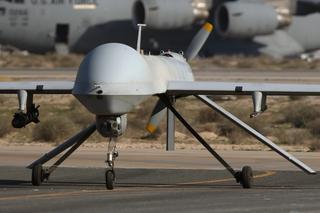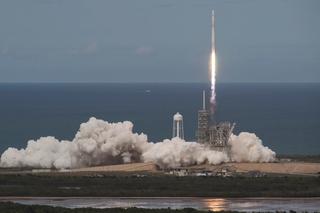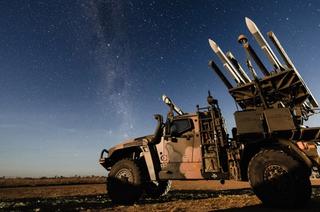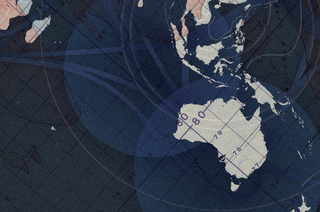Executive summary
The Missile Technology Control Regime (MTCR) is a voluntary, multilateral export control regime designed to limit the spread of missile and unmanned aerial vehicle (UAV) technologies capable of delivering weapons of mass destruction. The United States, long a staunch advocate of the regime, has in recent years begun to reinterpret and relax its national MTCR obligations in response to concerns that the MTCR is constraining interoperability and burden-sharing with allies and undermining the international competitiveness of the US defence industry.
Since 2018, the United States has implemented a series of regulatory reforms easing national export controls on MTCR-controlled technologies. These reforms have loosened the ‘presumption of denial’ (a legal requirement that export license applications be denied absent extraordinary circumstances) for highly sensitive ‘Category I’ systems and streamlined licensing processes. These US reforms have had an observable, enabling effect on US defence exports, including recent US approvals of UAV exports to India and Tomahawk cruise missile exports to Japan, Australia and the Netherlands. However, ongoing uncertainty about the scope and application of the US reforms is likely to have a chilling effect on license applications and approvals of US exports under the new regime, limiting the full realisation of the reforms’ intended benefits.
For Australia, US reforms offer substantial opportunity. They enable greater access to advanced US missile and UAV systems, open the door to deeper co-development and sustainment partnerships with the United States, and have the potential to energise US industrial partnerships such as AUKUS Pillar II and the Guided Weapon and Explosive Ordnance (GWEO) Enterprise. Yet, Australian industry and defence actors must navigate the ambiguities of the evolving US regime. Proactive licensing applications for newly deregulated technologies can help clarify US regulatory boundaries and institutionalise Australian access to US-origin, MTCR-controlled technologies. Simultaneously, Australia must ensure that its own export control regime is sufficiently robust to manage the potential influx of sensitive missile and UAV technologies while maintaining its non-proliferation commitments.
Recommendations
For the United States:
- US export control authorities should explore training and outreach for US licensing officers, defence firms and partner militaries to clarify and socialise the export opportunities of MTCR reform.
- US export control authorities should collect and analyse data on exports of MTCR-controlled technologies such that they can evaluate the impact and efficacy of reforms.
For Australia:
- The Australian Department of Defence and Australian defence industry firms should pursue license applications for US, MTCR-controlled technologies that clarify US regulatory boundaries and institutionalise Australian access to these technologies.
- Australian export control authorities should review and, if necessary, update Australian export controls to ensure that they are sufficiently robust to (1) leverage the strategic and industrial benefits of greater access to US-origin, MTCR-controlled technologies, while also (2) meeting Australia’s non-proliferation objectives and US concerns around reexports of some of its most sensitive military technologies.

Introduction
Since its establishment in 1987, the Missile Technology Control Regime (MTCR) has served as a cornerstone of the global non-proliferation architecture, regulating exports of missiles and unmanned aerial vehicles (UAVs) capable of delivering weapons of mass destruction. However, changes in the strategic utility and commercial landscape of these systems have led to questions regarding the MTCR’s continued relevance and efficacy. In the United States, industry and policymaking communities have come to view longstanding MTCR export controls as impediments to national security objectives, alliance commitments and industrial competitiveness.1
Against this backdrop, Washington has embarked on a steady, bipartisan effort to reinterpret and relax aspects of its MTCR obligations through changes to its national export control regulations. This article examines the rationale behind recent US MTCR-related reforms, the nature of the regulatory shifts since 2018 and practical challenges that remain in implementation. It also assesses the implications of these reforms for Australian defence and industrial equities, highlighting opportunities for force interoperability, workforce development and integration into US supply chains, as well as the domestic regulatory adjustments that may be required to realise them.
The reform context
The MTCR is a multilateral export control regime that regulates the transfer of missile and UAV systems and their supporting technologies, equipment, data and services. Established in 1987 by the G7, its membership has grown to 35 states — including Russia, Australia, South Korea and India — along with several non-member states that pledge to adhere to MTCR guidelines, including China. The MTCR classifies controlled technologies as either Category I or Category II. A classification of ‘Category I’ is reserved for “those items of greatest sensitivity” and carries with it a presumption of denial — a legal requirement that export license applications be denied absent extraordinary circumstances — setting a very high bar for export.2 Category I items primarily consist of missile or UAV systems (and their major subcomponents) capable of delivering a payload of at least 500 kilograms to a range of at least 300 kilometres.3
MTCR-member states are expected to implement MTCR export controls through their own national export control systems. This gives states discretion in how they interpret, legislate and enforce MTCR requirements.
Like other multilateral export control regimes — the Australia Group, the Wassenaar Arrangement and the Nuclear Suppliers Group — the MTCR is a voluntary association of states with no independent enforcement mechanism.4 Accordingly, MTCR-member states are expected to implement MTCR export controls through their own national export control systems. This gives states discretion in how they interpret, legislate and enforce MTCR requirements.
The United States has long been a champion of the MTCR. It was instrumental in the MTCR’s design; it was one of the MTCR’s founding members; it pushed other states (both members and non-members) to observe MTCR guidelines; it has a strong track record of compliance; and it has demonstrated a strong commitment to implementation, often adopting national laws and policies that go above and beyond base MTCR requirements.5
In recent years, however, there has been growing US scepticism regarding participation in the MTCR. This has been anchored by several criticisms:6
- Fewer opportunities for allied burden sharing: The MTCR limits the US ability to export critical military technologies to allies and partners, reducing the ability of these states to defend themselves, integrate with US force structures and burden share with the United States. Such burden sharing can include co-production and co-development of missile and UAV systems, sustaining forward-deployed US systems, performing missions to free up US capacity, or providing surge capacity and resilience through offshoring production capabilities. This challenge is most visible in the AUKUS context, where the United States’ 2024 relaxation of International Traffic in Arms Regulations (ITAR) export controls on AUKUS partner countries was subject to a near-blanket exclusion of MTCR-controlled technologies.7
- Reduced competitiveness of US defence firms: Restrictions on missile and UAV exports make US firms less competitive against their foreign competitors, such as those from China and Israel, that are not MTCR signatories; and those from Russia, which exhibits uneven compliance with its MTCR obligations. This allows competitors to capture markets to the long-term detriment of US defence firms and the wider supporting defence industrial base.8 To the extent that China and Russia in particular are able to capture markets, it will also create dependencies on Chinese/Russian technology and supply chains, which may evolve into information security or grey-zone coercion challenges.
- Proliferation risks: Restrictions on missile and UAV exports mean that the United States is forfeiting opportunities to strengthen relations with foreign states, for example, through enduring training and sustainment arrangements and defence industry integration. It also incentivises capable states to develop their own indigenous capabilities for missiles and UAVs, posing potential proliferation challenges.
- Reduced ability to shape international norms: The United States can attach to exports of missiles and UAVs conditions that shape international behaviours and norms as to how these systems are (and are not) used, for example, in terms of attacks on noncombatants and unlawful surveillance. The MTCR restricts US exports of such systems and, by extension, the US ability to shape such behaviours and norms.
- Obsolescence: The increasing ubiquity of missiles and UAVs means that the strict controls placed on the transfer of these technologies by the MTCR are yielding diminishing returns. Further, efforts to ‘modernise’ the MTCR to address evolving missile and UAV proliferation challenges are constrained by the regime’s decision-by-consensus mechanism, which leaves it vulnerable to political obstruction by member states, particularly Russia.
Recent reforms
In response to these concerns, the United States has, since 2018, engaged in a series of reforms relaxing national export controls on MTCR technologies (see Table 1). These reforms reduce the scope and scale of export controls on MTCR technologies while also removing bureaucratic impediments to the licensing process, for example, allowing US defence primes to negotiate foreign UAV sales directly, rather than having to channel these negotiations through the US Department of State.9 While broad in their applicability, these reforms demonstrate two key changes in the US approach to interpreting MTCR requirements through its national export control regime. First, UAVs are increasingly treated as a distinct sub-category of controlled technologies to be regulated independently of cruise and ballistic missiles, as evidenced by the battery of reforms relaxing UAV exports specifically (esp. from 2018–20) and the assigning of new performance parameters for regulation (i.e. speed). This mirrors arguments in the commentariat that regulating UAVs through existing MTCR guidelines is out of step with the modern role of UAVs which is “much more akin to aircraft than missiles” (manned aircraft being exempt from the MTCR).10
Table 1. Major, public US policy changes relaxing export controls on MTCR-controlled technologies since 2018
- Certain UAV exports allowed to proceed through the Direct Commercial Sales (DCS) process rather than the more stringent Foreign Military Sales (FMS) process.
Enacted 19 April 201811 - MTCR Category I UAV with a maximum airspeed of less than 800km per hour treated as Category II, i.e. exports no longer subject to a presumption of denial.12
Enacted 24 July 202013 - Scope of ‘enhanced end-use monitoring’ reduced from ‘all military UAS transfers’ to only those that proceed via FMS.
Enacted 24 July 202014 - Exports of satellites and satellite components to MTCR-member states no longer subject to a presumption of denial.
Enacted 15 March 202315 - Greater ‘flexibility’ in approving Category I exports to certain states despite presumption of denial.
Enacted 3 January 202516 - Apparent reinterpretation of Category I ‘production facilities’ subject to blanket ban (as per MTCR transfer guidelines) to narrower construct of “complete production facilities that encompass all capabilities necessary to produce a Category I system independently” (emphasis added).17
Enacted 3 January 202518 - Reduced scope of exports that must proceed through more tightly regulated FMS process.
Enacted 9 April 202519
And second, the United States is seeking options for exporting its high-capability Category I systems. The 2020 Trump reforms, for example, created a carveout for Category I UAVs that travel under 800km per hour, and the 2025 Biden reforms formalised greater “flexibility” in approving both Category I space-launch vehicles and missile systems.20 Alongside these reforms, the United States has increased Category I exports to partner governments, including US approvals for exports of its Tomahawk cruise missiles to Japan, Australia and the Netherlands,21 as well as the transfer of armed drones to India.22
The sustained, bipartisan nature of reform efforts since 2018 suggests that MTCR reform has not been a fluke, but rather a deliberate response to the various concerns outlined above. The fact sheet accompanying the 2020 Trump reforms, for example, presents that the reforms will “increase trade opportunities for U.S. companies,” “bolster partner security and counterterrorism capabilities,” “strengthen bilateral relationships,” and “preserve U.S. military advantage.”23 And the fact sheet accompanying the 2025 Biden reforms similarly cites the reforms’ utility in “strengthening allied defense capabilities, bolstering the U.S. defense industrial base, streamlining defense trade, and deterring adversaries.”24

Further, support for reform appears to persist in both the current US administration and Congress. Trump’s April 2025 Executive Order 14268, for example, charges the Secretary of State and the Secretary of Defence with “Reevaluat[ing] restrictions imposed by the Missile Technology Control Regime” to “strengthen the security capabilities of our allies and invigorate our own defense industrial base.”25 And in May 2025, two Republican Members of the House Committee on Foreign Affairs introduced legislation to do away with the presumption of denial on “MTCR items to NATO, major non-NATO allies, and Five Eyes members," citing explicitly the need to "strengthen crucial partnerships like the AUKUS defense pact.”26
Despite apparent widespread political support for MTCR reform,27 the United States’ incremental approach — paired with token references to its “commitment to nonproliferation”28 in reform instruments — suggests that non-proliferation concerns still loom large in its efforts to unilaterally reinterpret MTCR obligations. Greenwalt and Corben’s 2024 analysis suggest various non-proliferation headwinds “from the State Department, the White House and pockets of Congress” facing reformers in Washington, including “enduring regional sensitivities over the perceptions of AUKUS as a proliferation risk” and a desire to preserve the MTCR as “one of the few remaining arms control [mechanisms] … that both the United States and Russia are party to.”29 Such headwinds will place upper limits on the adoption and implementation of further reforms but, at this stage, do not appear sufficiently strong to derail the reform agenda entirely.
Opportunities for the United States
While US reforms have undoubtedly been material, on their own, they are unlikely to be a panacea for US concerns. In their current form, US relaxations of MTCR controls lack transparency as to when and how they apply.30 The 2025 Biden reforms, for example, relax the Category I presumption of denial by promulgating “increased flexibility for case-by-case review” of Category I exports to “certain partners with strong export control systems,” but do not provide detail (at least publicly) as to how this new standard will be operationalised.31 This raises questions as to, which ‘partners’ will be eligible for this relaxation of the presumption of denial; whether new partners can become eligible under this new framework by improving their export control systems; whether there are factors other than export controls that determine partner eligibility; and whether these standards apply equally across various Category I systems, e.g. civilian space-launch systems versus military cruise missiles. While such ambiguity is often an intended regulatory mechanism to provide flexibility in decision making and prevent attempts to ‘game’ the licensing process, in the export control context, it is likely to have a chilling effect.
While such ambiguity is often an intended regulatory mechanism to provide flexibility in decision making and prevent attempts to ‘game’ the licensing process, in the export control context, it is likely to have a chilling effect.
A lack of transparency may lead licensing authorities to under-approve license applications. Licensing action officers are notoriously risk-averse, and any uncertainty as to the applicability of relaxations of MTCR controls is likely to lead to a conservative approach to implementing reforms.32 By the same token, a lack of transparency may lead foreign governments and industry bodies to decline to make the often significant investments required for license applications for newly deregulated systems, assuming that their applications will not succeed as their eligibility is not explicitly spelled out in official guidance. Thus, without sufficient transparency as to when and how they apply, the full enabling potential of these reforms for US defence exports is unlikely to be realised.
Recognising that a full, detailed and public elaboration of the US conditions for license approvals under this new regime is unlikely for various political and administrative reasons, there are still tools available for the US Government to manage the chilling effects of regulatory ambiguity to maximise import and export opportunities. US export control authorities could, for example, conduct training for licensing action officers on the reforms and the exports that they are designed to facilitate, offering greater clarity as to when officers are expected to depart from previous licensing practices. They could also direct outreach to key stakeholders, including defence primes and partner militaries, on the import/export opportunities brought about by these reforms.
- Recommendation. US export control authorities should explore training and outreach for US licensing officers, defence firms and partner militaries to clarify and socialise the export opportunities of MTCR reform.
US export control authorities might also undertake a formal evaluation of the licensing process to assess the impact of MTCR reforms on defence exports and whether they are meeting their declaratory goals around US industrial competitiveness, allied capabilities, etc. To do so, authorities will need to collect and analyse data relating to, for example, license approval rates; license processing times; new US exporters entering defence and dual-use markets; changes in US market share of critical defence capabilities, especially vis-à-vis strategic competitors; and novelty in new defence exports, for example in terms of systems, destinations and values. Authorities might also structure evaluation activities to address the concerns of anti-reform stakeholders by collecting and analysing data related to the diversion of MTCR-controlled US defence exports to adversarial governments or WMD programs.
- Recommendation. US export control authorities should collect and analyse data on exports of MTCR-controlled technologies such that they can evaluate the impact and efficacy of reforms.
Opportunities for Australia
US MTCR reforms will result in increased Australian access to US UAVs and missile systems. Importantly, increased access will not just come in the form of sales; under the emerging regime, Australia’s defence forces can also more readily undertake onshore maintenance and sustainment of US-origin, MTCR-controlled technologies. This will increase the readiness of US-origin Australian missile and UAV assets and also allow Australia to take a greater role in maintaining and sustaining forward-deployed US MTCR-controlled assets, for example, through United States Force Posture Initiatives. This will increase the strategic value to the United States of basing in Australia and provide workforce development opportunities for the Australian services.
Loosening US export controls on MTCR-controlled technologies also provides co-development and co-production opportunities for Australian defence firms with their US counterparts. The ability for Australian firms to more readily import US-origin parts, subcomponents, data, services and training related to MTCR-controlled items will enable them to plug into US supply chains, replicate US industrial processes and jointly innovate on US-origin technologies. Ultimately, doing so would potentially energise US-Australia defence industry collaboration initiatives such as GWEO and AUKUS Pillar 2.
As a stakeholder in US MTCR reforms, Australian defence and industry actors have a role to play in seeing the reforms reach their full potential. As noted above, limited transparency around the scope and application of the reforms will create uncertainty about which exports are viable under the new regulatory regime. To help clarify these boundaries, the Australian Department of Defence and Australian defence firms can test the limits of US reforms through license applications of newly deregulated systems and their underpinning technologies, equipment, data and services. The success of such exploratory license applications will offer proofs of concept for licensors and licensees that have the potential to ‘open the floodgates’ for further applications and approvals of comparable exports.33 Whereas the failure of such exploratory license applications will clarify where barriers still exist and provide potential targets for further reforms. In this sense, licenses might not only be sought in terms of their immediate military or business utility, but also on their ability to provide clarity to, and lock in the opportunity gains of recent US reforms.
- Recommendation. The Australian Department of Defence and Australian defence industry firms should pursue license applications for US, MTCR-controlled technologies that clarify US regulatory boundaries and institutionalise Australian access to these technologies.
Australian export control authorities will also need to assess whether Australian export controls are sufficiently robust to regulate a potential influx of sensitive, US-origin, MTCR-controlled technologies under the emerging regime. For example, export controls will need to be sufficiently strict to continue to meet Australia’s national non-proliferation objectives, commitments under the MTCR, and US sensitivities regarding reexports of its missile and UAV technologies.34 At the same time, export controls should not unduly hinder the new industrial opportunities brought about by increased access to US technologies. In leveraging new co-production and co-development opportunities related to sensitive, MTCR-controlled technologies with US firms, for example, Australian industry will need some discretion in (re)exporting MTCR-controlled items to the United States. Australian industry should also be empowered to leverage the externalities of co-production and co-development initiatives — skills, knowledge, infrastructure, etc. — to support its wider defence export agenda.
- Recommendation. Australian export control authorities should review and, if necessary, update Australian export controls to ensure that they are sufficiently robust to both leverage the strategic and industrial benefits of greater access to US-origin, MTCR-controlled technologies while also meeting Australia’s non-proliferation objectives and US concerns around reexports of some of its most sensitive military technologies.






